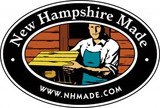It is no secret that we are big fans of tallow products. I mean, we started a whole business, so it would seem reasonable that we believe in the cleaning and soothing power of tallow. Even though tallow soap isn’t the most common type of soap used today, tallow has been around for quite some time. Tallow has made its mark on history with a wide variety of uses, many of which are still in place today.
The discovery of tallow soap is claimed to have happened thousands of years ago by the Sumerians. As early as the Bronze Age, a substance made from animal fat (tallow) was used to make soap and candles. In Ancient Greece and Rome, tallow was also used to clean grease from wool and cloth; this activity likely helped spread the popularity of tallow around Europe.
Tallow also played an essential role in lighting and fuel during these times. It was burned in oil lanterns or torches—often alongside other animal fats like lard or suet—to create light when there wasn’t enough natural sunlight available. The Romans were also fond of cooking with tallow. They’d use fresh cuts such as beef belly strips, sausages, and meatballs and fry them in tallow with added garnishes.
Tallow became a general cooking oil and made its way into other products like candles. It was used in place of butter or lard in many applications because it was more stable than either of these animal fats. In fact, tallow has such a low melting point that it can be used as an electric heating element without fear of overheating or melting the insulation around it (which would cause sparks).
Tallow is still used today as an industrial lubricant and lubricant for machinery parts; however, most people don’t realize how important this ingredient is to our lives today!
Tallow uses beyond soap have always been vast. It has such a range from cooking to lighting and fuel. For our purposes, we are just interested in tallow as soap, cream, or balm.
Tallow became a common ingredient in soap.
In the Middle Ages, people began using soap made out of animal fat which was mixed with ashes or lye (sodium hydroxide) to form a paste called “lard” or “tallow.” This mixture became so popular that it eventually replaced olive oil in many recipes due to its cheaper price tag. It was even used to aid skin diseases such as ringworm and scabies in the early days. This use of tallow was developed once people realized it had antibacterial properties that could help prevent infection.
It is much easier today to mass produce soaps made from vegetable oils like palm oil. That is why mainstream soap manufacturers typically use palm oil for their soaps. However, soaps made with palm oil often come with a host of other issues, such as environmental concerns, poor labor conditions, chemical additives, and more.
Large soap manufacturers prefer to go with a more lucrative soapmaking process which usually leads to less concern for health benefits and compatibility.
Even though tallow soaps are not typically mass-produced, they are the ideal soap. They provide more vitamins and nutrients to your skin, and when made by small soap makers, you usually don’t have to worry about added unnecessary chemicals.
Why we use tallow in our soaps
Tallow is a great option for soapmaking because it’s full of vitamins and nutrients and is an extremely stable base for soap. Tallow has natural antibacterial, antimicrobial and anti-inflammatory properties and similar fat saturation levels to humans - making it easy for our body to absorb all the benefits.
It helps soothe and smooth skin ailments better than traditional palm oil soaps. Tallow balms contain vitamins A, D, E, K, and B12, which can all be beneficial to your skin health and appearance. Tallow reduces waste in the farm industry by using every part of the animal and doesn’t require harsh chemicals like paraben or phthalate additives.
Overall, tallow is a great ingredient to use in your soap. It has a well-established history in the soap industry and many other industries. If you use quality grass-fed tallow, you can create a quality soap that really cleans skin and helps it look and feel its best.


